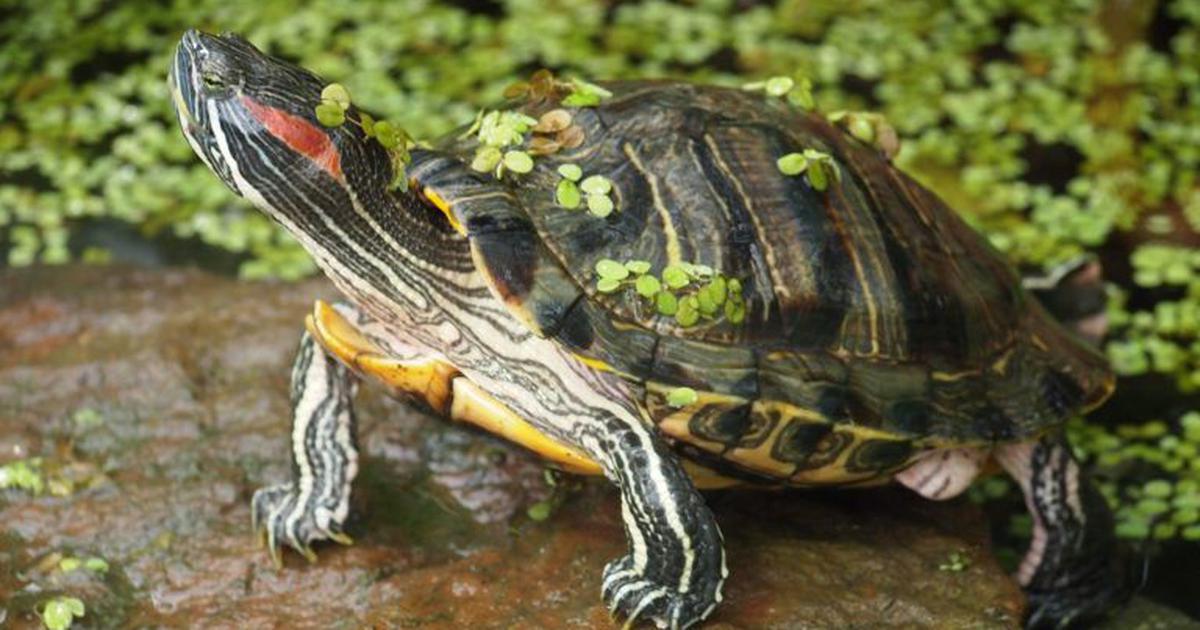Table of Contents
Bengaluru customs officials recently intercepted a man from Tamil Nadu smuggling 2,547 red-eared slider turtles from Singapore. Tragically, over 500 died during transit, and the remaining turtles were euthanized after detection of Salmonella infection, which poses serious health risks to humans and animals. This incident has raised concerns about illegal wildlife trade, biosecurity threats, and the spread of invasive alien species in India.
Origin & Habitat
-
Native Range: Southeastern United States and Northeastern Mexico.
-
Preferred Habitats:
-
Freshwater ecosystems like ponds, lakes, swamps, marshes, and slow-moving rivers.
-
Can also survive in brackish waters.
-
-
Behavior:
-
Semi-aquatic; spends much of its time swimming and foraging underwater.
-
Frequently basks on rocks, logs, or floating debris to regulate body temperature.
-
Invasive Species Concerns
-
Global Impact: Listed among the “100 of the World’s Worst Invasive Alien Species” by the International Union for Conservation of Nature (IUCN) Invasive Species Specialist Group.
-
Reasons for Invasiveness:
-
Popular in the global pet trade; often released into the wild when owners cannot care for them.
-
Highly adaptable and aggressive in competing for food and basking spots.
-
Can displace native turtle species, alter food webs, and damage aquatic vegetation.
-
Known carriers of diseases and parasites like Salmonella spp., which can infect humans and other wildlife.
-
Physical Appearance
-
Key Identifier: A bright red or orange stripe behind each eye (hence the name).
-
Coloration:
-
Carapace (upper shell): Dark olive green, often with yellowish streaks.
-
Plastron (underside): Yellowish with dark blotches.
-
Limbs: Greenish with yellow striping.
-
-
Size: Adults typically measure 12–30 cm in shell length.
Lifespan
-
Wild: Typically 20–50 years depending on environmental conditions.
-
Captivity: Can live longer with proper care due to lack of predators.
Diet
-
Omnivorous—Diet changes with age:
-
Juveniles: More carnivorous, feeding on small fish, insects, and aquatic invertebrates.
-
Adults: More herbivorous, consuming aquatic plants, algae, and detritus along with occasional animal prey.
-
Conservation Status
-
IUCN Red List: Least Concern (globally not threatened).
-
India’s Perspective: Not native; considered an invasive species under Indian biodiversity guidelines. Its introduction is discouraged due to ecological harm to native turtle populations such as the Indian roofed turtle (Pangshura tecta) and Indian tent turtle (Pangshura tentoria).
India & Legal Aspects
-
Wildlife Protection Act, 1972: Red-eared sliders are not native and thus not listed in the schedules; however, their import is regulated under Customs and quarantine laws.
-
Convention on International Trade in Endangered Species (CITES): Not listed under CITES Appendices, but trade is subject to national biosecurity and invasive species control regulations.
-
Biosecurity Risks: Illegal import can lead to:
-
Spread of zoonotic diseases like salmonellosis.
-
Ecological imbalance by outcompeting local turtles.
-
Long-term biodiversity loss in wetlands.
-


 India’s New Earthquake Design Code 202...
India’s New Earthquake Design Code 202...
 SoLAR Phase II Launched 2025: India, Ban...
SoLAR Phase II Launched 2025: India, Ban...
 Asia Power Index 2025: India Secures 3rd...
Asia Power Index 2025: India Secures 3rd...

























